





Ensuring the water quality entering the system is at its best can ensure the systems has a long lifespan.


n Water treatment 101
n DHW dedicated return lines
n Heat pump water heaters

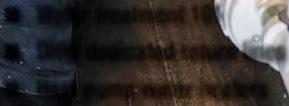

























40+








Proper Installation Techniques
Carbon Filtration 6. Iron Filtration 7. Removing Odors and Gases 8. Reverse Osmosis Systems 9. UV Systems 10. Presenting the Benefits of Water Treatment to Homeowners



Worked with some of the industry’s leading companies Past member of the board of directors for EWQA and Sales Director for Canature WaterGroup


We know that people are looking for regular training for either themselves or for their staff. I can confidently say this as a little while back, we sent out a survey to our readers on various questions related to training. A total of 114 people responded to the survey.
Of those surveyed, 92 per cent answered that regular training was either extremely
important or very important. To put this into perspective, only seven per cent said that it was somewhat important and only one individual stated that it wasn’t important at all.
This survey helped shape the development of our Technical Training Days. We saw ourselves being in a unique position in the

industry, not a manufacturer, wholesaler, or contractor, but somewhat of a third-party that possesses intimate knowledge of this industry. This role allows for us to utilize our contacts within the industry and have experts come together to help fulfil somewhat of a gap in the industry.
Now, I am not speaking about training courses when I mention the gap. There are plenty of courses out there. Instead, we get to offer a collection of the fantastic resources already out there and help an industry that we are a part of.
When we asked our readers if they were interested in either attending or having an employee attend some kind of virtual training conference, more than 78 per cent (or 89 respondents) stated that they would be interested.
At this point, we knew that there was an interest. But the next part was making sure that the training itself was hitting the marks that were of most importance to our readers. We polled our readers on which topics they’d like to learn more about in terms of plumbing, hydronics, and HVAC/R. Since this is our Plumbing Technical Training Day, I will be focusing on the plumbing topics.
There was a slew of topics that we provided to the respondents, but the major ones were heat pump water heaters, plumbing troubleshooting, and tank versus tankless. We tried to take these points of interest and apply them the best we could to our Technical Training Day.
For each of the sessions that we run, we turn the presentation into an article to be published in the next edition of the magazine. Our next Technical Training Days will run and focus on the following: Refrigeration on June 26, Heat Pumps on Sept. 11, and lastly, Business management on Nov. 13.


Municipal water coming into a home should have some level of protection against hardness, disinfectants, and harmful contaminants.
By John Cardiff
View the full presentation on “What’s in Your Water? Water Treatment 101” here:


Over the past several decades, the quality of water found at taps across Canada has come increasingly under scrutiny. Municipally treated water is required to meet the Guidelines for Canadian Drinking Water Quality set by Health Canada and the federalprovincial-territorial committee on drinking water; more and more Canadians are realizing that their water contains unwanted hardness, disinfectants, and, in some cases, harmful contaminants.
There are a few elements found within municipal water that should be removed, which includes hardness (magnesium and calcium), disinfectants (chlorine and chloramines), and harmful contaminants (PFAS, lead, microplastics, chromium, and others).
Approaching in-home water treatment with these three primary areas in mind can help give your customers water solutions that will protect the health of their family members and pets; prevent damage to plumbing, fixtures and water-using appliances; and give them optimal water for healthy hair and skin, sparkling dishes, and softer laundry.
The links between disease and exposure
to environmental pollution or chemicals are becoming better understood. Perand polyfluoroalkyl substances (PFAS), chromium, microplastics and lead are four harmful contaminants that all Canadians should be aware of and remove from their water.
As the most trusted water expert for your customers, be sure you take a wholehome approach to
treatment for
both
municipal water applications.
water
well
and
Since the early 2000s, PFAS, particularly perfluorooctanoic acid (PFOA) and perfluorooctanesulfonic acid (PFOS), have gained worldwide awareness as toxic chemicals with severe health effects from exposure or ingestion. PFAS are commonly

referred to as forever chemicals because they are among the most persistent toxic compounds in existence, contaminating everything from drinking water to food, food packaging and personal care products. According to the U.S.-based Environmental Working Group (EWG), they are found in the blood of virtually everyone on Earth, including newborn babies.
In October 2020, the EWG released a study that estimated more than 200 million U.S. households could have a PFAS concentration of one part per trillion or higher in their tap water. In April 2024, the U.S. Environmental Protection Agency (EPA) announced the final National Drinking Water Regulation for six PFAS, including PFOA (4.0 ppt) and PFOS (4.0 ppt). As part of the regulatory update, water providers must test for these PFAS and alert the public when levels are too high.
In Canada, the government has prohibited the manufacture, use, sale and import of PFOS, PFOA as well as products that contain these substances. According to Health Canada, many studies have confirmed the presence of PFAS in drinking water sources as well as tap water. PFOS and PFAS are
the most detected PFAS in Canadian water samples. In 2023, Health Canada released a recommended limit of 30 ng/L (30 ppt) for PFAS in drinking water – nearly eight times the EPA limit.
While lead is a more commonly known contaminant, Canadians may still be surprised to know it could be in their home’s tap water. A large source of lead in drinking water is a result of the widespread use of lead service lines to move water from municipal treatment plants to homes and businesses. Lead lines were installed throughout Canada until 1975 and the use of lead soldering for these lines continued until 1986.
Microplastics, extremely small pieces of plastic that are a result of degrading plastic garbage and industrial water, have links to severe health diseases, including asthma, pulmonary cancer due to inhalation, liver damage, nerve and brain damage, and kidney diseases.
Chromium has been linked to several health effects, including kidney and liver damage, abdominal pain, and respiratory cancer. While chromium does occur naturally, more than 70 per cent of it comes
from industrial and manufacturing processes, according to Health Canada.
Reverse osmosis (RO) is the best solution to remove contaminants from water. Health Canada specifically cites RO technology as an effective way to remove chromium from water in its Chromium in Drinking Water publication released in 2015. Customers who want to remove harmful contaminants from their drinking water can install a point-of-use RO system in their home. Commercial sized systems can be installed to provide wholehome membrane filtration.
When choosing a RO system, look for the NSF 58 certification. Systems certified to this standard have been tested and verified to meet their claims for contaminant reduction, structural integrity, TDS reduction performance, safety of materials in contact with drinking water, and efficiency rating. Within the NSF/ANSI 58 certification process, systems can be tested to verify reduction claims for specific contaminants, including lead, PFOS/PFOA, hexavalent and trivalent chromium, and radium. To find out if a system has been certified to reduce specific contaminants, check the system’s certification badge, product literature, or the certifying body’s website.
This is an example of a certification badge for a RO system that is certified to the NSF/ ANSI 58 standard and has been verified to reduce specific contaminants.

Example of a certification badge for reverse osmosis.
It’s well known that municipal water treatment plants use chlorine to treat raw water to make it safe for public consumption. While chlorine is an effective disinfectant that kills bacteria, viruses, and other microorganisms in water, it
Continued on page “23”

Continued from page “21”
can have unintended side effects like forming trihalomethanes when it encounters organic matter.
Recently, chloramines have become a popular water disinfectant. Both chlorine and chloramines, a mixture of chlorine and ammonia, can cause the formation of potent carcinogens N-nitrosodimethylamine and other N-nitrosamines in water.
Chlorine and chloramines are known to damage plumbing and pipes and can be harmful to humans and pets. These chemicals also degrade water softener resin, turning it into a jelly-like substance that can significantly restrict flow rates. Adding a carbon filter in front of a water softener will protect the resin.
The best all-around adsorbent available for removing organic chemicals and contaminants is granular activated carbon (GAC). GAC is made from high carbon-based materials such as coconut shells or coal and is well-known for its ability to remove chlorine, tannins, phenols, pesticides, tri-halomethanes (THMs) and toxic organic compounds from water.

grains/gallon (GPG) to be slightly hard; 3.5 to seven GPG to be moderately hard; and seven GPG or higher to be hard.

There are contact time requirements mandated for properly functioning granular activated carbon filtration.
Catalytic carbon is created by using a high-temperature gas process to alter the electronic and surface structures of activated carbon. This higher level of catalytic activity gives it the ability to reduce chloramines and hydrogen sulfide (H2S) in water. Regular GAC cannot remove chloramines. There are three types of in-home carbon filters: inline filters, dual inline filters, and whole-home filters (backwashing and non-backwashing). Whole-home filters offer the most contact time and chlorine or chloramine reduction.
The Canadian Water Quality Association (CWQA) considers water with one to 3.5
When recommending a water softener, make sure it has been certified to perform according to its claims. When looking at certifications, remember that NSF/ANSI 61 only requires conformance to material safety requirements. NSF/ANSI 44 requires conformance to softening performance in addition to material safety, structural integrity, capacity, and brine accuracy. In addition to the certification, look for one of these recognized testing bodies: NSF, IAPMO and WQA. Once a certified system has been chosen, taking the time to properly size the softener by looking at
Depending on where you are in Canada, the water coming into your building will have different levels of hardness.
the water composition (determined by a water test or analysis), the size of the house and the family’s water use is important to recommend the right one.
As the most trusted water expert for your customers, be sure you take a whole-home approach to water treatment for both well and municipal water applications. While municipal water applications have traditionally focused on softening hard water, carbon filtration and reverse osmosis systems offer an additional level of in-home protection that will give your customers healthy water and peace of mind. :
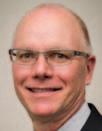
John Cardiff has been in the water treatment industry for 42 years starting with Water Conditioning Canada Ltd., now known as Canature WaterGroup (CWG). He is the executive vice president of sales and business development for North America. Cardiff leads CWG’s sales teams across all brands, customer service, and customer and employee training departments, as well as the commercial industrial engineering division.











1-519-364-7550 Hanover, ON

1-905-670-7966

Continental is recognized as an industry leader in Canada for our cold climate heat pump technology. Our new EQhub smart thermostat delivers efficiency and lower operating costs through fuel choice and time of use rates.*
Our hybrid systems are fully supported and eligible for federal and provincial rebate programs, benefiting homeowners. Count on our nationwide HVAC training and support for these innovative products to support the growth of your business.
Visit us at CMPX to learn about our diverse range of products and connect with our dedicated team.



1-800-267-2135







These dedicated return lines continuously circulate hot water from the water heater to each fixture, ensuring a higher rate of instantaneous hot water supply.
By Francesco Lo Presti
Information taken from Rick Mayo’s, western product and application instructor at Taco Comfort Solutions, presentation on “DHW Re-Circulation Systems” on April 24. Watch here:
Is there anything better than turning on your shower and immediately feeling hot water wash over your body? I think it’s
safe to say that most Canadians can attest to this sweet luxury’s appeal, especially during our colder months.
Installing a recirculation system is one methodforensuringthattheoverallefficiency of the plumbing system is reaching your customers' expectations. At its core, it helps minimize water waste and provide the desired temperature quickly
The beauty behind recirculation systems is that there isn’t just one solution — various configurations can be utilized, depending on the user’s needs. To start, there are traditional recirculation systems. These consist of a dedicated return line that continuously circulates hot water from the water heater
to each fixture in the building. It should be noted that these types of systems can lead to increased energy consumption due to the constant circulation of hot water. Ensuring the system is appropriately sized can help mitigate this concern.
Another option is to design a partial circulation system. This system employs a pump at the water heater and a temperature controlled valve at the furthest fixture. The pump circulates water when the temperature at the farthest fixture drops below the set temperature, reducing energy consumption compared to the traditional method.
On-demand recirculation systems utilize a thermal sensor valve that opens to allow hot water into the cold water line when the temperature drops. The reason is that the

thermal sensor valve allows instant hot water delivery without needing a dedicated return line.
Get your pump on
The hot water circulation pump is like the heart of the recirculation system. It helps circulate hot water continuously, keeping the water in the pipes hot and ready to be used instantly at each fixture. The sole responsibility of the circulator is to have water at the fixture.
There are several ways to achieve instantaneous hot water depending on the layout of the building. In new construction projects, you will have full control over the design and layout of the building. However, in retrofit projects, you are dealing with a layout already created.
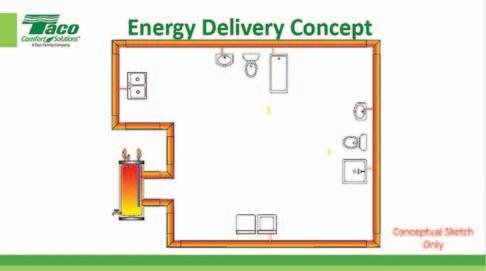
In Figure 1, you can see the hot water tank’s energy delivery through the system. In that delivery, the energy is taken and directed to close proximity of everything the hot water serves. To make this concept more efficient and effective, it is crucial to think of the system as an energy delivery system that puts the source right next to where you want to use it. This can be referred to as fixture groups.
If it’s broken, fix it
Now, let’s look at what happens when a system fails. A system can fail due to various factors, such as having sprays or leaks. The reasons why a system fails varies, however there are four common reasons — elevated water temperatures, fluid velocity moving through the pipe, added chlorines, and continuous circulation.
It is worth noting that the velocity of the fluid can be controlled when moving through the pipe. There are ways to slow the water down. A key area of focus is ensuring that the circulating pump is not oversized and that the return piping is not undersized, as both are common occurrences in installed piping systems. This is crucial in controlling the velocity of fluid moving through the pipe. You can see an example of how to properly size the pipe for the GPM maximum flow in Figure 2.

of the supply portion of the system to the hot water fixture. If done correctly, and the numbers are accurate, that will provide you with the minimum flow required to overcome the line losses. This will become a continual GPM requirement, resulting in the pump running continuously. Most people will typically use this consideration as the main source of determining the GPM.
The beauty behind recirculation systems is that there isn’t just one solution — various configurations can be utilized, depending on the user’s needs.
Two things need to be determined when properly sizing the circulator — finding out what the GPM is and establishing the feet of the head. There are six steps or considerations you can use to determine what the GPM is. The first step would be figuring out the line or heat losses
Secondly, how quickly do you purge the lines? If the circulator is shut off and turned back on, how quickly do we need to evacuate all that tepid water and bring the hot water system back up to a usable temperature? The third consideration is understanding the maximum velocity limitation based on the material inside the system.
Another consideration is the minimum flow through mixing valves. If you are using tankless units, you will also need to consider the minimum flow requirements. You will also need to figure out a strategy to control the pump.
These six considerations will drive the GPM requirement. However, as long as you are insulating the hot water piping system and the dedicated returns, the heat losses will generally be the lowest GPM number, and you could only use that as your criteria number. Once you have the GPM, you can determine the accurate number of feet of head. :
Natural Gas Alternatives for Electrification
Trusted Performance, Quality and Reliability
Reduces Energy Consumption Over Comparable
Natural Gas Systems
Strong Canadian Customer Support Team























McDonnell and Miller, Morton Grove, Illinois, introduces its electric low water cut-off product line featuring its GuardDog
RB-24SE and GuardDog RB-122E for hot water boilers. The RB-24SE features a universal wiring harness and 15,000 ohms probe sensitivity. The RB-122E features a primary cut-off and 20,000 ohms probe sensitivity. Both GuardDog’s feature McDonnell and Miller’s patented self-cleaning probe and are designed per UL353/1998 standard. McDonnell and Miller are a Xylem Brand. Xylem www.mcdonnellmiller.com

General Pipe Cleaners, McKees Rocks, Pennsylvania, debuts its Cold-Shot pipe freezing kit. The kit allows for the repair of an operating water system without draining lines, sprinklers, or hot water systems. Using CO2 in dip-tube cylinders, the Cold-Shot freezes liquids in steel, copper, cast iron, aluminum, or plastic pipes –1/8-inch through two-inch in diameter. The Cold-Shot kit includes 10 sets of freeze heads, two high-pressure spiral hoses with grips and injectors, a T-distributor, a locking nut, a hex head screwdriver, rubber gloves, goggles, and a carrying case. General Pipe Cleaners www.drainbrain.com
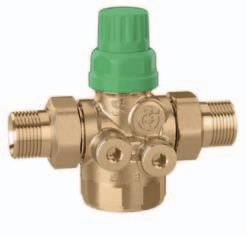
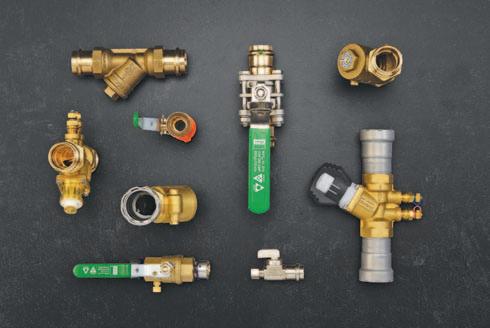
Viega, Broomfield, Colorado, expands its valve portfolio by introducing 21 valves across the ProPress, MegaPress, and PureFlow systems. The new valves include swing check valves, strainers, brass ball valves, a ProPress three-way mixing valve and a three-piece ball valve.
Viega www.viega.com

Jim Alkaline Technologies, Westfield, Massachusetts, introduces the V-200, the company’s latest vertical mount condensate neutralizer solution. The V-200 model is specifically designed for wall-hung condensing installations (i.e., wall-hung boilers and tankless water heaters) in single and multi-unit residential applications with limited available floor space. The V-200 provides installation flexibility with two optional outlet ports, enabling versatile outlet piping configuration.
Jim Alkaline Technologies www.jimalkalinetech.com
Caleffi, Milwaukee, Wisconsin, adds a new product to their fleet of balancing products. The 145 Series Flowmatic pressure independent control valve (PICV) combines an automatic differential pressure regulator and a control valve with an optional actuator. With a control signal input, the Flowmatic automatically adjusts the flow rate and keeps it constant under changing circuit differential pressure conditions. The valve is available in 1/2-inch, 3/4-inch, and one-inch valve body sizes with sweat, press and FNPT union tailpieces. Caleffi www.caleffi.com
Milwaukee Tool, Mississauga, Ont, debuts its newest tube-cutting appliance. The M12 Brushless 1-1/4-inch to two-inch copper tubing cutter automatically adjusts diameter to cut type K, L, and M copper pipes from 1-3/8-inch to 2-1/8-inch. Featuring a rotating head, the M12 delivers over 100 cuts on a singular charge from a Milwaukee XC 4.0 battery. The M12 has a maximum cutting diameter of 2-inch, a maximum RPM of 325 and a minimum cutting diameter of 1.25-inch. Milwaukee Tool www.milwaukeetool.com
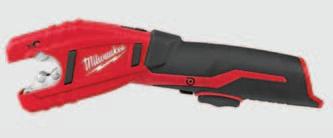
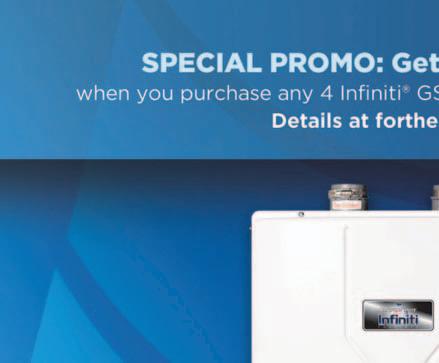




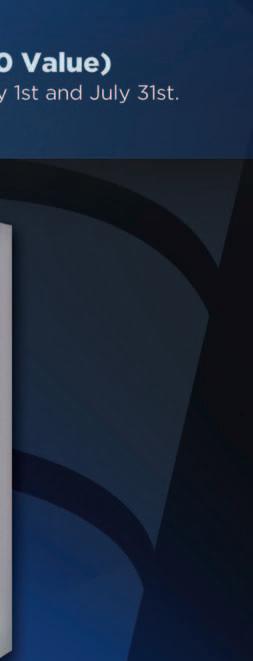

Every contractor needs a go-to tankless that can tackle just about any job. That’s what we had in mind when we engineered the Infiniti® GS & GR tankless gas water heaters. They’re flexible and easy to install in many configurations.
• Residential and Commercial applications
• Robust stainless steel heat exchanger for longer life
• Cascade and common venting between standard and recirculation models
• ENERGY STAR® certified and Certified Green Product™ by the Green Restaurant Association

See how we built a better tankless

Air-source
heat pump water
heaters can deliver high water temperatures, with high efficiency even when operating in areas with low ambient temperatures.
By Francesco Lo Presti
Information taken from Gary Chang’s, lead engineer of the HVAC division at Mitsubishi, “Plumbing Technical Training Day” presentation on April 24. Watch here:

Hot water is a commodity everyone values and needs. Having that instantaneous hot water when you turn on your shower is the goal. There are technologies in the market that can not only provide on demand hot water, but also provide energy savings while doing so – air-source heat pump water heaters that utilize CO2.
Statistics Canada reports that in 2017, Canadians used an average of 75 litres of hot water every day. This includes showering, washing dishes, and cleaning clothes. Additionally, water heaters account for 19.3 per cent of the energy used in Canadian homes and 5.7 per cent of the energy used commercially. It is also safe to assume that since these are pre pandemic numbers, the amount of hot water and energy used in homes increased during and after the pandemic.
Now that we have a rough idea of how much water and energy we are typically using in the home and in the office, let’s take a look at the different hot water heaters in the domestic hot water market.
First is the traditional natural gas boiler; arguably the most common technology. Due to the frequent starting and stopping of the boiler, this technology produces a high amount of CO2 and NOx emissions, resulting
in greater greenhouse gas emissions. Next up is the electric water heater. This unit is fairly simple to install and while there are no greenhouse gas emissions, it consumes significant amounts of electricity.
CO2 air-source heat pump
water heaters represent an important technology in sustainable building design.
The air-source heat pump that we are focusing on utilizes a refrigerant, in this case CO2, plus a compressor to absorb ambient air temperature to generate hot water. Essentially, this system is harvesting heat from the air and transferring it into water.
How it works
CO2 heat pump water heaters utilize carbon dioxide as the refrigerant in a closed-loop system to extract heat from the
Continued on page “32”

Figure “A” is a representation of a typical configuration. It is intended to work in conjunction with a heat exchanger and a primary storage volume to fulfill domestic hot water needs.
Continued from page “31”
surrounding air or water. This absorbed heat is then transferred to the water, raising its temperature significantly.
Air-source heat pump water heaters work by applying electricity to run the compressor, which moves the refrigerant across the outdoor coil to take heat from the outside air, which is then pushed through the heat exchanger. On the cold-water side, you have your cold-water supply from the city, which is stored in the hot water tank, providing hot water on demand.
When it comes to energy efficiency, CO2 heat pump water heaters often achieve higher COPs than the previously mentioned hot water heaters. CO2 heat pump water heaters can achieve a COP between one and three, electric heaters a COP of one, and a conventional gas boiler typically achieves a COP of just under one. However, it is important to remember that COP can vary depending on the outside air temperature.
CO2 heat pump water heaters also offer a greener alternative by reducing carbon emissions. With zero ozone depletion potential (ODP) and a global warming potential (GWP) of one, CO2 refrigerant has a significantly lower impact on the environment compared to traditional refrigerants such as
hydrofluorocarbons (HFCs).
When it comes to the transcritical cycle of CO2, it has a higher pressure compared to R-134A. This means that the CO2 refrigerant can remain in a vapour state during the heating cycle, allowing for more heat to be transferred.
There are different systems depending on the level of Delta T required. For the most efficient serving storage tanks where high Delta T is required, you would have a single-pass system with high lift. Single pass means that cold water will go in through one heat exchanger, allowing for a high lift of temperature.
For example, if the cold water supply from the city is 10 C or 15 C, this system can convert the heat taken from the air and heat the water as high as 65 C to 75 C. This is ideal when charging hot water for daily use. You will see the single pass with high lift system used in commercial spaces such as condominiums, gyms, hotels, etc. Whereas a multi-pass system is ideal for the constant flow of hot water recirculation. In this system, you will have lower Delta T but higher GPM. When it comes to the configuration of a high lift system, you will have your primary side with the air-source heat pump water heater, secondary side with storage, and re-
circulation with a swing tank. There will be a heat exchanger between the primary and secondary side.
Next, we will take a look at how to properly size an air-source heat pump compared to a conventional natural gas boiler As per the DHW heating design manual by ASPE, there are two rules to follow for the conventional method Conventional water heating equipment in multifamily buildings is based on either the 30/3 guideline (systems with generators and storage tanks) or the five-minute peak demand (for instantaneous systems.) The 30/3 refers to 30 minutes of generation/storage for 3 hours of use.
To size this system, you first need to determine the low, medium and high water demands
For sizing refrigerant-based water heaters, like the CO2 heat pump water heaters, you will be focusing on the operating range, which is longer and higher compared to the conventional method. Traditionally, the operating range for refrigerant based water heaters is between 12 to 18 hours
The reason for this is the CO2 systems come with a compressor, allowing the system to run for longer periods of time, versus turning it on or off.
The designer must also select the total heating output of the air-source heat pump heater to meet the required capacity output at the coldest design outside ambient temperature. Thestorage needs to be able to deliver the calculated peak hot water demand as well as considering the required recovery time for the intended use.
The installation location of the air-source heat pump is also important. These units should be placed outdoors to eject cold air into the ambient environment.
CO2 air-source heat pump water heaters represent an important technology in sustainable building design. As the world moves toward decarbonization for a greener environment, CO2 air-source heat pump water heaters provide a key solution to reducing carbon emissions in commercial buildings and more energy-efficient future. :
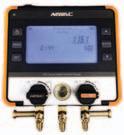
Navac, Lyndhurst, New Jersey, launches its NX1 Nexus digital manifold gauge. It combines smart device technology with Bluetooth and wireless connectivity to enhance diagnostic processes for HVAC professionals. It integrates with the myNavac app, enabling remote control and monitoring. The gauge can deliver insights such as temperatures, pressures, and vacuums for versatile applications. It features four operation modes: manifold mode (designed to resemble a traditional manifold gauge), leak test mode (users can access live wireless pressure readings and track changes), evacuation mode (allowing users to monitor evacuation status), and decay test mode (monitoring of the vacuum decay at any point of the system). The NX1 Nexus is A2L ready and compatible with 72 types of refrigerants. Navac www.navacglobal.com
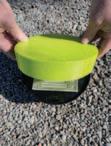
Introducing Lime-Set, a new product that is designed for the mechanical contractor. The two-piece patented system is easy to use — place the Lime-Set base plate under the floor drain/cleanout, tighten the floor drain/cleanout to hold the base plate in place and put the Lime-Set cover
on. This piece can be trimmed to the desired height before pouring concrete. Once the concrete is poured, the floor drain/cleanout can be found with its lime green exterior. When the flooring contractor comes to install flooring, simply cut the Lime-Set cover, discard and thread the floor drain/cleanout up to match the finished flooring height. No more chipping, grinding or buffing. Lime-Set www.lime-set.com


Flir, Wilsonville, Oregon, announces the Extech BR450W series of video borescopes for inspecting difficult-to-reach targets in building, automotive, and plant maintenance applications. The two models, the BR450W-D dual HD wireless and BR450W-A2 two-way articulating wireless will provide users with remote control and display, documentation, sharing options, and an intuitive user interface for troubleshooting. The BR450W series connects via Wi-Fi to the Extech ExView app for remote viewing. Users can capture images, videos, and audio recordings through the app. The app offers an optional side-by-side view for troubleshooting and can host multiple meter connections to iOS and Android tablets or phones. The BR450W-D dual HD wireless video borescope is designed for HVAC, hard-to-reach electrical, attic, and crawlspace inspections. Flir www.flir.com

















QuietComfort® 96 Variable-Speed
Gas Furnace with Two-Stage Operation (G96VTN)
• Up to 96.7% AFUE
• 60,000 – 120,000 BTUh
• Lifetime Heat Exchanger Limited Warranty+
• 10-Year Parts Limited Warranty*
QuietComfort® Compact Heat Pump (DLCURA)
• Up to 18 SEER2 / Up to 12.4 EER2 Cooling
• Built-In 24V Interface
• Traditional Line Sets
• 10-Year Parts Limited Warranty*
June 26, 2024 • 12-5pm EST
Quality Technical Training
No sales pitches!
Engaging sessions
Answer live quizzes and ask questions
Networking Speed meetings, social media lounges, breakout rooms Win Prizes Gamification challenges Live Demos
Don’t miss your chance to learn, network, and win! Register now.Only $25! Save 50%
More Details: www.accelevents.com/e/hydronics-technical-training-day

